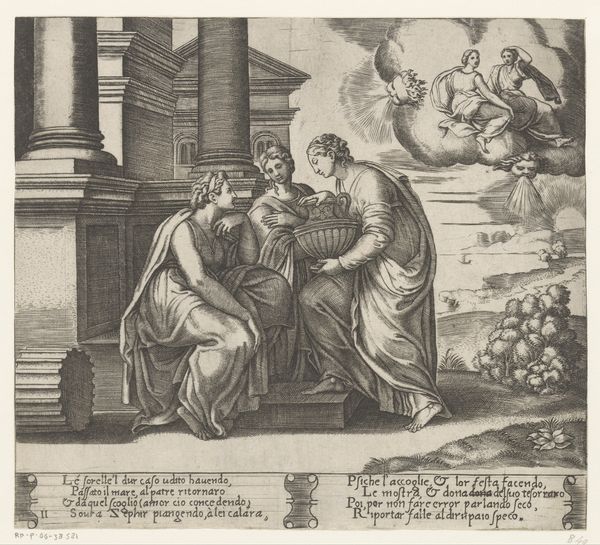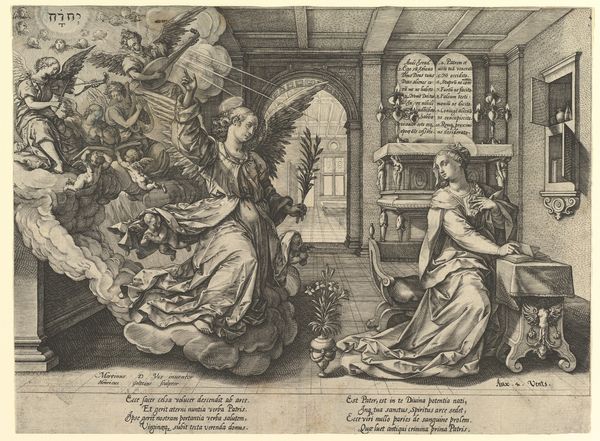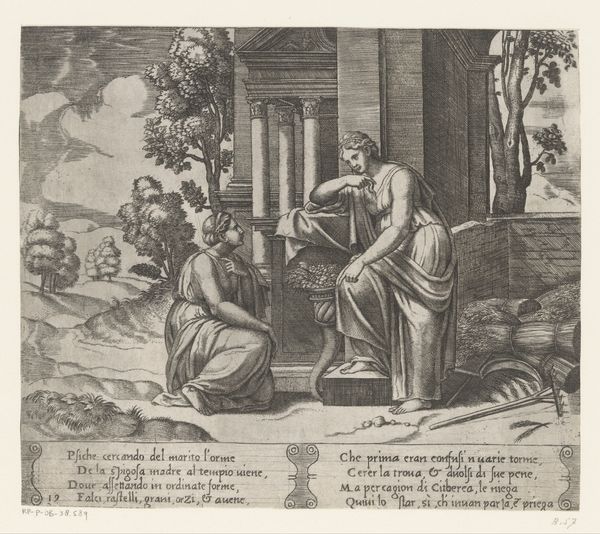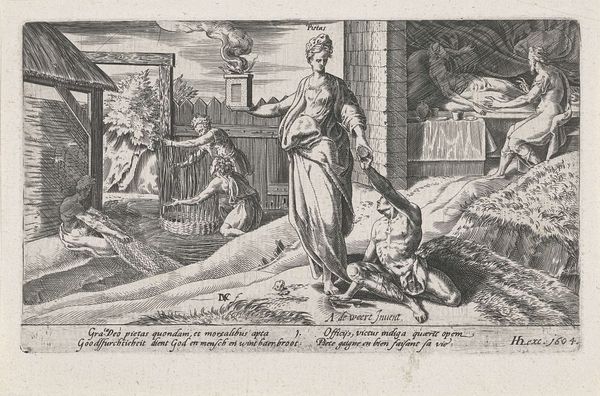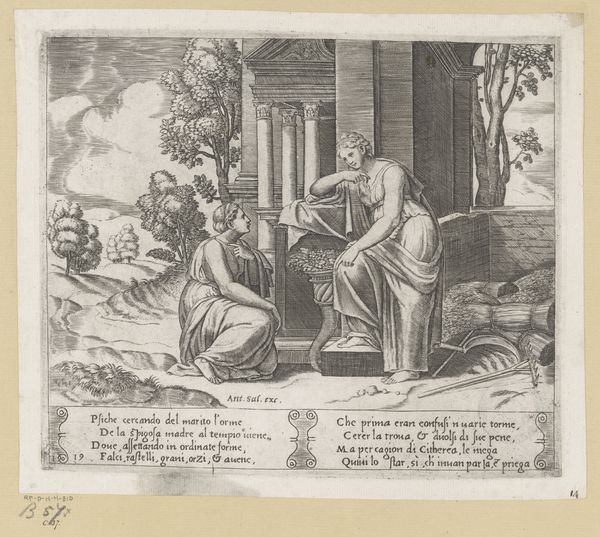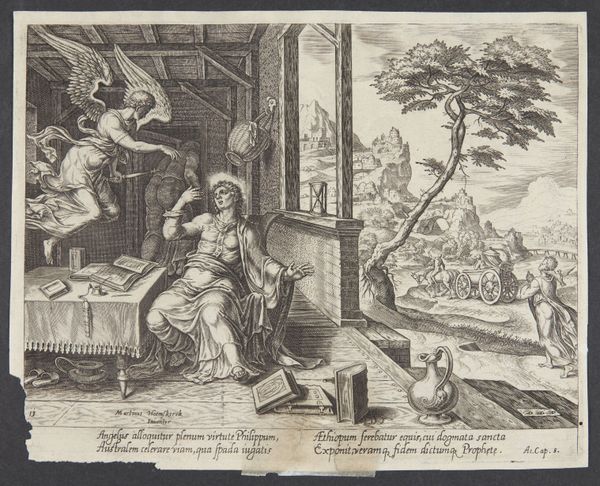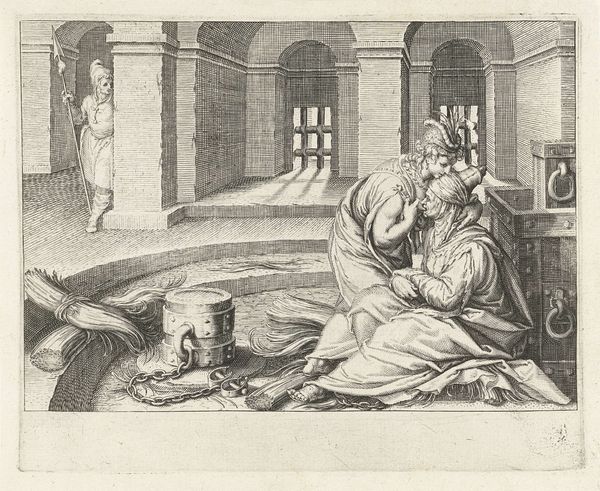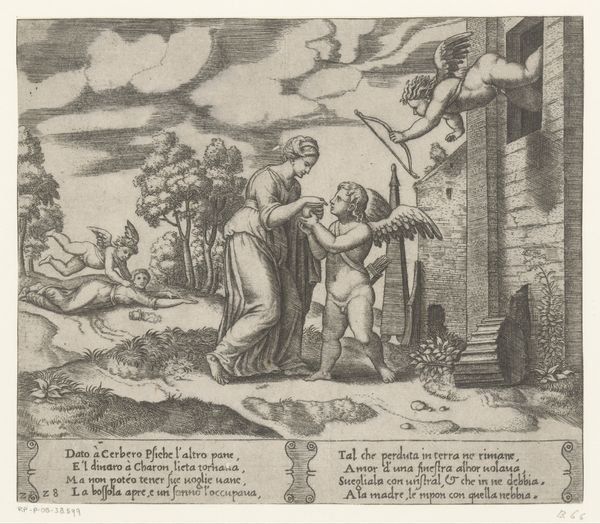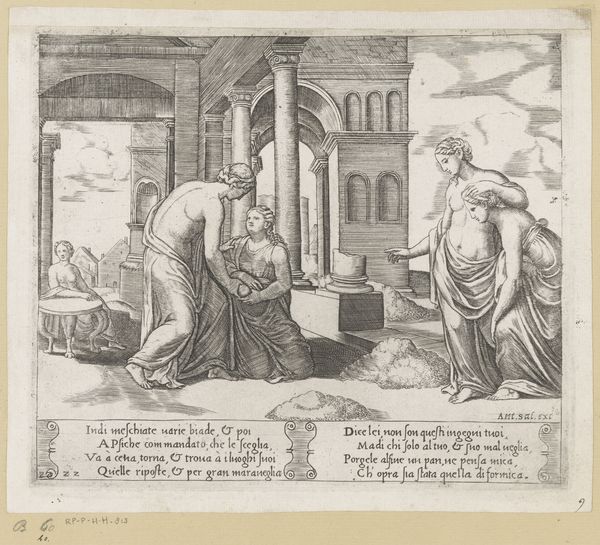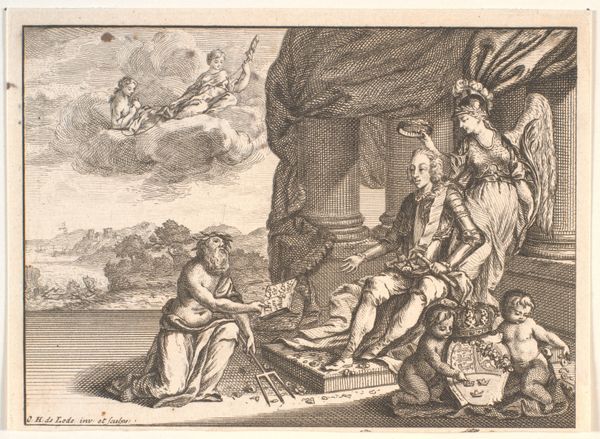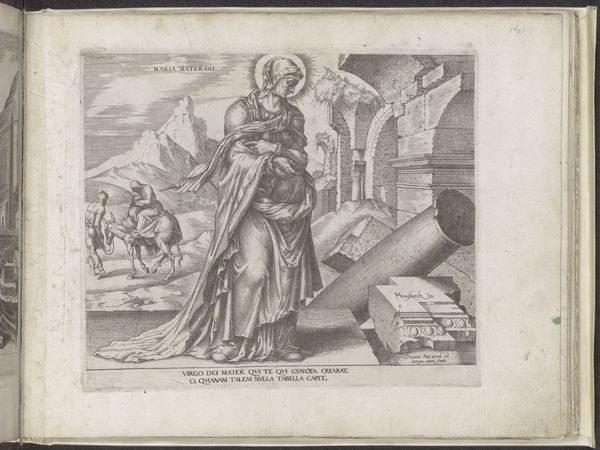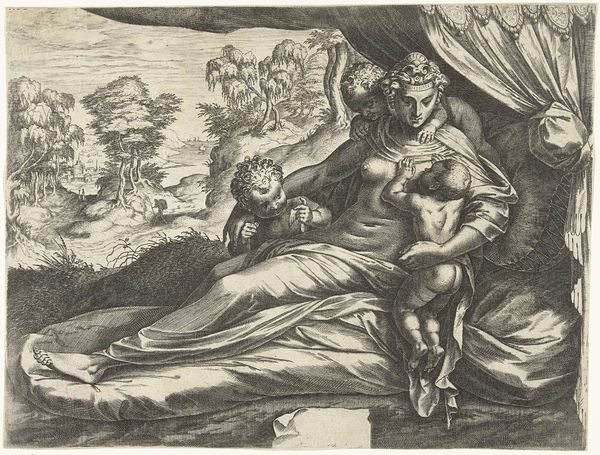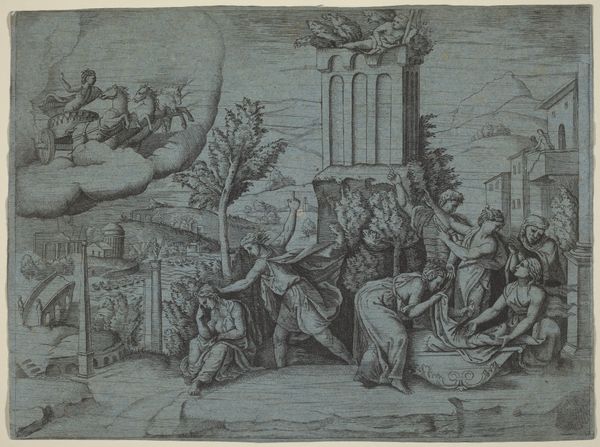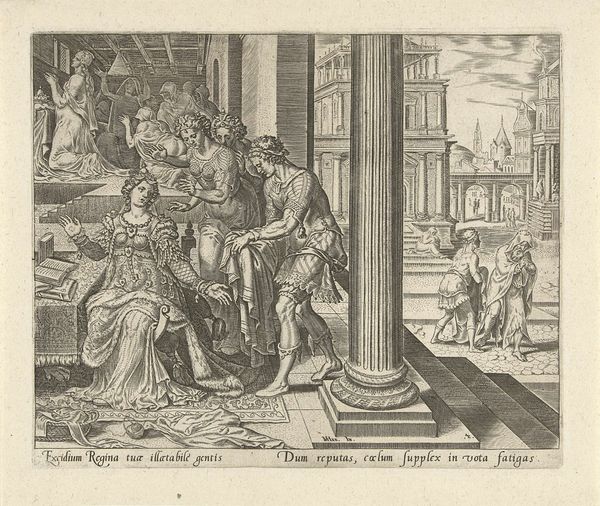
Psyche ontvangt de kruik met Proserpina's schoonheid c. 1530 - 1560
0:00
0:00
print, engraving
#
allegory
#
narrative-art
# print
#
old engraving style
#
mannerism
#
figuration
#
history-painting
#
engraving
Dimensions: height 199 mm, width 231 mm
Copyright: Rijks Museum: Open Domain
Curator: Welcome. We’re standing before “Psyche Receiving the Jar of Proserpina’s Beauty,” an engraving by the Master of the Die, dating from around 1530 to 1560. It depicts a moment from the story of Cupid and Psyche. Editor: Wow, what strikes me is the incredible sense of drama and…unease? The shading is so dense, almost chaotic, especially in the top left corner, like a storm brewing, reflecting Psyche’s turmoil, maybe? Curator: That dense cross-hatching certainly amplifies the emotional tenor. Notice how the architecture – those looming columns – and the figures themselves are meticulously rendered. It’s classic Mannerism in its elongation and almost artificial grace. The figures have a studied elegance, but their posture hints at the gravity of the situation. Editor: Absolutely. Psyche's companion kneeling looks distraught; that head in her hands, conveying deep sorrow. And Psyche, so composed yet there’s a weight in her posture, like she already knows the jar holds trouble. Does that jar stand in contrast, somehow…apart? It’s sitting on the floor, a minor feature, but somehow ominous. Curator: It’s indeed a subtle inclusion, almost casual. What’s remarkable is how the artist uses this almost quotidian detail to carry so much narrative weight. We, of course, know what's in the jar and this moment captures the precipice of Psyche's ill-fated curiosity, echoing themes prevalent during that era—hubris, temptation, and the fragility of beauty. Editor: Temptation and beauty. Yes! It feels relevant still, even today. I find myself thinking about social media—about those impossible standards of beauty we are tempted by daily. Perhaps the jar contains, after all, something timeless. Curator: That's a potent reading, how this early printed image finds resonance with our contemporary condition. It highlights art’s ability to hold mirrors up to humanity across time. Editor: Right. The Master of the Die captured this suspended moment—between the fulfillment of a task, and the catastrophic error soon to follow. Curator: Indeed. We often seek control, that promised control is often exactly what leads to destruction. It is perhaps one of the most important things to see and remember from our visit today.
Comments
No comments
Be the first to comment and join the conversation on the ultimate creative platform.
